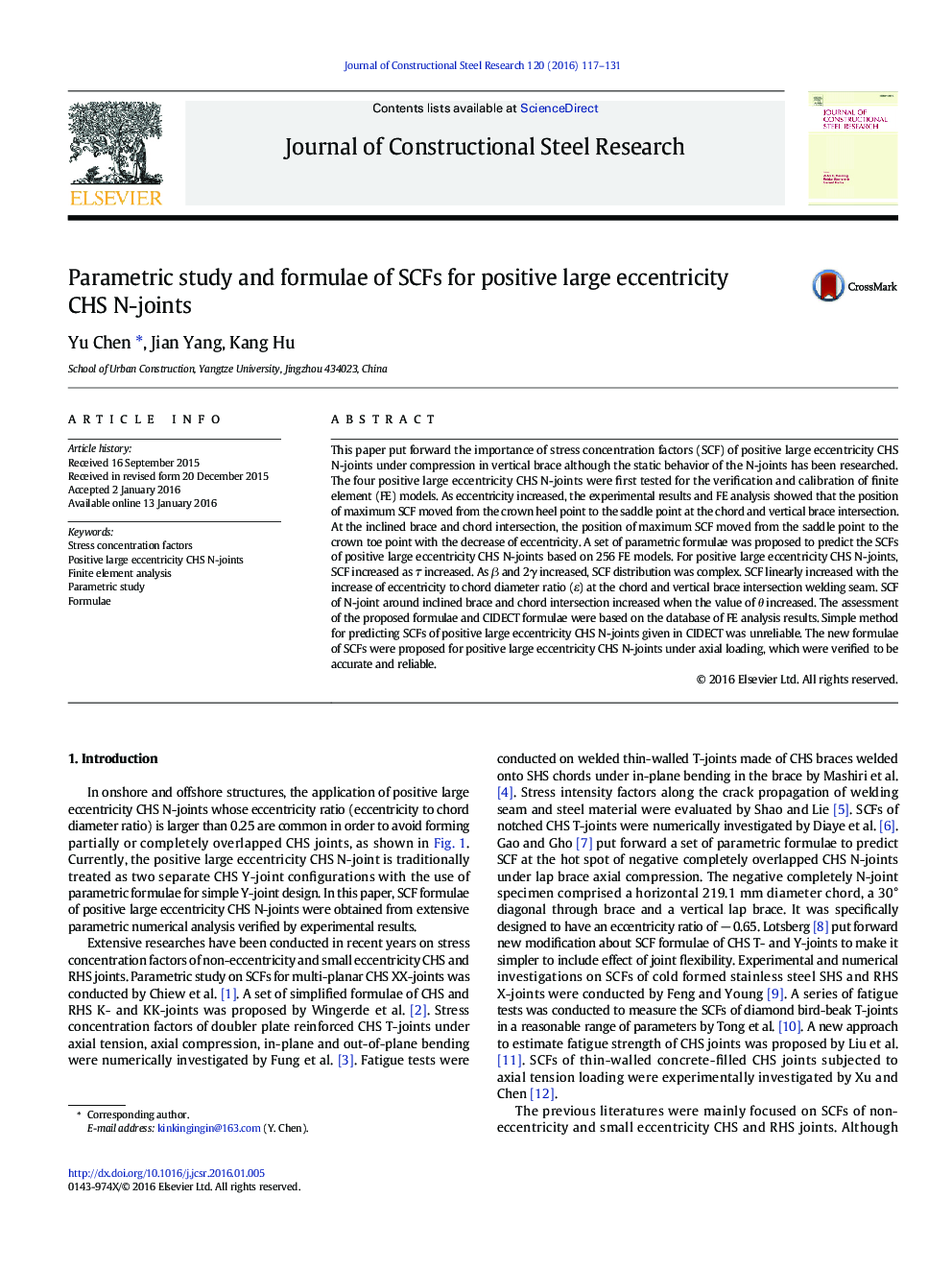| Article ID | Journal | Published Year | Pages | File Type |
|---|---|---|---|---|
| 284292 | Journal of Constructional Steel Research | 2016 | 15 Pages |
•SCFs of positive large eccentricity CHS N-joints were experimentally investigated.•SCF of joints increased as τ increased.•SCF of joint distribution was complex as β and 2γ increased.•SCF of joints increased with the increase of eccentricity to chord diameter ratio.•The proposed SCF formulae of joints were verified to be accurate and reliable.
This paper put forward the importance of stress concentration factors (SCF) of positive large eccentricity CHS N-joints under compression in vertical brace although the static behavior of the N-joints has been researched. The four positive large eccentricity CHS N-joints were first tested for the verification and calibration of finite element (FE) models. As eccentricity increased, the experimental results and FE analysis showed that the position of maximum SCF moved from the crown heel point to the saddle point at the chord and vertical brace intersection. At the inclined brace and chord intersection, the position of maximum SCF moved from the saddle point to the crown toe point with the decrease of eccentricity. A set of parametric formulae was proposed to predict the SCFs of positive large eccentricity CHS N-joints based on 256 FE models. For positive large eccentricity CHS N-joints, SCF increased as τ increased. As β and 2γ increased, SCF distribution was complex. SCF linearly increased with the increase of eccentricity to chord diameter ratio (ε) at the chord and vertical brace intersection welding seam. SCF of N-joint around inclined brace and chord intersection increased when the value of θ increased. The assessment of the proposed formulae and CIDECT formulae were based on the database of FE analysis results. Simple method for predicting SCFs of positive large eccentricity CHS N-joints given in CIDECT was unreliable. The new formulae of SCFs were proposed for positive large eccentricity CHS N-joints under axial loading, which were verified to be accurate and reliable.
